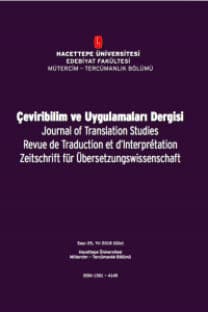Yazınsal Bir Gençlik Edebiyatı Metni Olarak The Catcher in the Rye/Çavdar Tarlasında Çocuklar’ın Analizi ve Çevirmenin Görünmezliği Üzerine Küçük Bir Yolculuk
The Catcher in the Rye/Çavdar Tarlasında Çocuklar Amerikalı yazar Jerome David Salinger’in 1951 yılında basılmış romanıdır. Kitap, yayınlandığı döneme ciddi etkiler yaptığı gibi, hedef kitlesinde de unutulmaz izler bırakmıştır. Birçok dünya diline çevrilen metin, bir ergen romanı olarak ana kahramanının hayata dönük duruşunda olduğu gibi hep muhalif olmuş metnin ana eksenini oluşturan düşünceye baktığımızda bu kahraman hiç olgunlaşmak istememiş ve hayata katılmayı reddetmiştir. Dönemine bakıldığında ideal mükemmel çocuk anlayışı gereğince yatılı okula iyi bir eğitim alması için gönderilen Holden, okul hayatında ve dış dünyada asla uyum sağlayamayacağı insanlarla karşılaşmış; ergenliğin zirve noktasında dolaşan Holden’in bu uyumsuzluğunu yazar, aynı zamanda ergenin başkaldırıcı ruhunu da kullanarak dönemimin anlayışlarıyla ciddi biçimde hesaplaşmıştır. Bu nedenle yayınlandığı dönemde defalarca yasaklanmış ve okullara girişi engellenmiştir. Bütün bunlardan yola çıktığımızda kitabın farklı ülkelerde çevirisi ve alımlamasının önem kazandığını düşünebiliriz. Kitap Türkçeye iki farklı dilden çevrilmiştir. Fransızca (ikinci dilden Adnan Benk) ve İngilizce (kaynak dilden Coşkun Yerli). Çalışmamızda çeviri karşılaştırması yapmaktan daha çok, verilen kararların çevirmeni görünür yapıp yapmadığı ve bunun ölçütü konusunda kuramsal çerçevede düşünce yolculuğu yapmak ve başka araştırmalarda bu konu nasıl ele alınırın ip uçlarını yakalamak ana hedefimizi oluşturmaktadır.
Anahtar Kelimeler:
ergen romanı, ergen dili, ergen romanı çevirisi, çeviri yaklaşımları, çevirmenin görünmezliği
The Catcher in the Rye and its Turkish Translation as a Young-Adult Novel: A Micro-Scale Journey into Translation Analysis and Translator’s Invisibility
"The Catcher in the Rye" is a young-adult novel by American writer Jerome David Salinger, which was published in 1951. The book had a significant impact on the period it was published and also left unforgettable traces in its target audience. Having translated into various languages, this young-adult fiction shares its opposing aspects with those of its protagonist’s life stance. The main axis of this dissident novel is comprised of the idea that the protagonist never wants to mature and refuses to participate in daily life. After being sent to a boarding school for a decent education, which is perfectly in accord with the construction of the ideal child in that era, Holden encounters people with whom he would never get along both at and outside of school. The writer uses the discordance of Holden, a complete teenager, together with his rebellious soul, and therefore, keenly confronts the understandings of the era in question. Due to its dissident character, it is repeatedly banned after its publication and not allowed to be in schools. Depending on current perception of reality, it is safely recognized that translations and reception of this novel in different languages gain prominence. The novel is translated from two different languages into Turkish: one is French language used by Adnan Benk, which is a relay translation, and the other is English -source- language used by Coşkun Yerli. This study deals with the question as to whether the translation decisions make the translator visible by considering its implications for the theoretical discussions rather than directly comparing those two translated novels. Our main goal is to shed light on tracing the clues of how to deal with this issue in other studies.
Keywords:
young-adult novel, young-adult language, translation of young-adult novel, approaches to translation, translator's invisibility,
___
- Asutay, H. (2001). Gençliğin Dili. Dokuz Eylül Üniversitesi Sosyal Bilimler Enstitüsü Dergisi, 3(2), 1-21.
- Baacke, D. (1987). Jugend und Jugendkulturen. Weinheim/München: Darstellung und Deutung.
- Barthes, R. (2016). S/Z (S. Öztürk Kasar, Çev.). İstanbul: Sel Yayıncılık.
- Coşkun Yerli ile Söyleşi. (2007) Ç.N. Çevirmenin Notu Dergisi, 4. Erişim: http://cevirmeninnotu.blogspot.com/2007/10/cokun-yerli-ile-sylei.html
- Hermans, T. (2003). Translation, equivalence and intertextuality, Wasafiri, 18(40), 39-41.
- Hermans, T. (2007). Translation, irritation and resonance. M. Wolf & A. Fukari (Eds.), Constructing a Sociology of Translation (ss. 57-75). Amsterdam: John Benjamins.
- Koskinen, K. (2000). Beyond ambivalence: Postmodernity and the ethics of translation. Tampere: Tampere University Press.
- Kesey, K. (1962). One Flew Over the Cuckoo's Nest. New York: Viking Press & Signet Books.
- Lefevere, A. (1977). Translating literature: The German tradition from Luther to Rosenzweig. Assen ve Amsterdam: Van Gorcum.
- Lefevere, A. (1992). Translation, rewriting, and the manipulation of literary fame. Londra ve New York: Routledge.
- Munday, J. (2001). Introducing translation studies: Theories and applications. Londra: Routledge.
- Munday, J. (2009). The Routledge companion to translation studies. Londra ve New York: Routledge.
- Pym, A. (1995). Schleiermacher and the problem of blendlinge. Translation and Literature, 4(1), 5-30.
- Salinger, J. D. ( 1995). Gönülçelen (A. Benk, Çev.). Can Yayınları: İstanbul.
- Salinger, J. D. (2006). Çavdar Tarlasında Çocuklar (C. Yerli, Çev.). YKY: İstanbul.
- Tymoczko, M. (1999). Translation in a postcolonial context: Early Irish literature in English translation. New York: Routledge.
- Venuti, L. (1991). Genealogies of translation theory: Schleiermacher. TTR: Traduction, Terminologie, Rédaction, 4(2), 125-150.
- Venuti, L. (1995). Translator’s invisibility: A history of translation. Londra ve New York: Routledge.
- Venuti, L. (1998). The scandals of translation: Towards an ethics of difference. Londra ve New York: Routledge.
- Venuti, L. (Ed.). (2000). The translation studies reader. Londra ve New York, Routledge.
- Venuti, L. (2008). Translator’s invisibility: A history of translation. Londra ve New York: Routledge.
- Yayın Aralığı: Yılda 2 Sayı
- Başlangıç: 1991
- Yayıncı: Hacettepe Üniversitesi
Sayıdaki Diğer Makaleler
Terimbilim Odağında ve Çevirmenin Tanıklığında Kuramsal Çeviri
Düşmanın Dilini Konuşmak: Kırımlı'da Çok Dillilik ve Çeviri Temsilleri
Sesli Betimleme (İşitsel Film): Filmlerde Görselin Sözle Telafisi
Geç Osmanlı Döneminde Kurumsal Çevirmenlerin Ortak Alan ve Habitus’u
Asli POLAT ULAŞ, Atalay GÜNDÜZ
Türkçede Kişisel Gelişim Çevirilerine Tarihsel Açıdan Bir Bakış: Kültürel Bir Alanın Doğuşu
Ön Sözleri Tanıklığında Bir Çevirmenin Serüveni: Çeviri Tarihimizde Nurettin Sevin
Simultane Çeviride Ana Dil Olmayan İngilizce’nin Atlamalar Üzerindeki Etkisi
